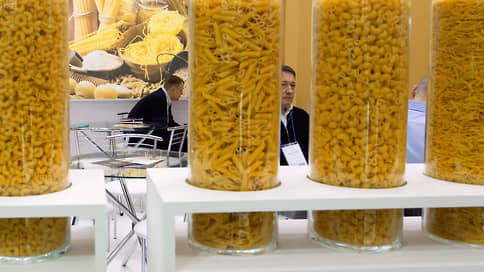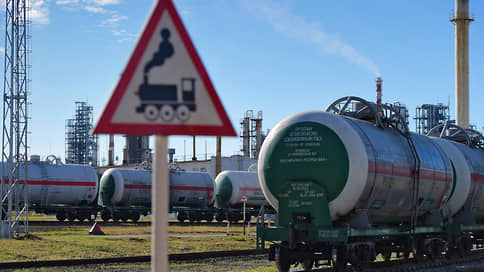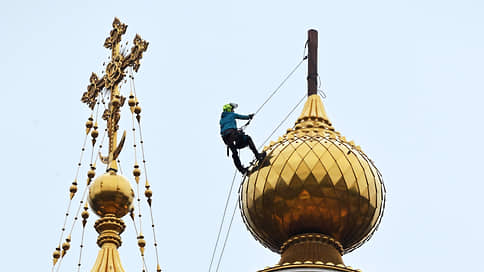The Italian producer of Barilla Macaron Raises Raising Prices from March 1

The Italian producer of pasta producer Barilla notified retailers of raising 15-30% of the imported assortment prices. The company occupies 10% of the Russian market in the category, importing 20% of the positions abroad. The rise in price is facilitated by the increase of customs duties from February for some products from the « unfriendly » countries. Local manufacturers of pasta are faced with an increase in cost due to the rise in price of raw materials.
A large supplier of pasta of the Barillla Rus LLC (Barilla brand) notified retailers of raising prices for 26 items from March 1, follows from the company's letter (Kommersant has). Its receipt was confirmed by Kommersant's interlocutors in two retail chains. For two positions, the change in prices will be insignificant. 24 items rise in price by 15-30%. The “Barill of Rus” did not answer “Kommersant”. The Mareven Food Santral (Rollton brand) refused comment. In “SI Group” (“Shebekinsky”, Maltagliati, Pasta Zara) they did not answer the questions “Kommersant” quickly.
Barilla is an Italian company specializing in food products, in particular in pasta. In Russia, the brand belongs to one of the most popular. In May last year, Nielsen analysts included the brand in the five of the best sold in monetary terms. The revenue of Barillila Rus LLC in 2023 amounted to 12.9 billion rubles, net profit – 1.4 billion rubles, follows from the data of the SPARK. By the year, these indicators increased by 11% and 20.2%, respectively. At the Institute for the Development of Entrepreneurship and Economics, the Barilla share in the Russian pasta market is estimated at 10%.
The interlocutor of Kommersant in one of the retail chains indicates that so far we are talking about increasing the cost of only imported Barilla products. According to his estimates, it forms 20% of the Russian assortment of the company.
Retails have not yet received notifications of changing prices for Barilla products produced in Russia. Sergey Nemirovsky, Executive Director of the National Association of Macarone Products, notes that the share of imports throughout the Russian market of pasta is 10-15%. The indicator for the past few years has been reduced due to the development of high -tech production facilities within the country, he says.
The most pronounced increase in selling prices, according to the text of the Barilla letter, will occur on March 1 for pasta without gluten – spaghetti, Fuzilly and Penne Rigate. They rise in price by 30%. Lazanya, Fettuchin, Taglutella, Farfalle will increase in price by 20%, most of the company's sauces – by 15%. In Barilla itself, the rise in price is associated with the weakening of the ruble and the increase from February 2, 2025 by 10% of the customs duty. According to the changes adopted at the end of last year, the rate for pasta from the « unfriendly » countries is 25% of the customs value, but not less than € 0.46–0.93 per 1 kg, depending on the type of product.
Russian manufacturers are also faced with an increase in cost now.
Dmitry Leonov, deputy chairman of the board of the Rusprodsoyuz Association, says that both general economic factors and the increase in the cost of raw materials are affected by the indicator. The wholesale cost of senior flour, he said, is now 26.2 thousand rubles. per ton. A year by the year, the indicator has grown by almost 16%. This is dictated, among other things, an increase in the cost of wheat of the third class by 35.3%, to 18 thousand rubles. For a ton in wholesale, he says.
The head of the Institute for the Development of Entrepreneurship and Economics, Arthur Gafarov calls flour the main factor affecting the cost of pasta. Mr. Nemirovsky draws attention to that some manufacturers to reduce costs and gain competitive advantages bring falsified products to retail. By claiming the use of flour from hard wheat varieties, they purchase a cheaper of soft varieties, he explains. The Ministry of Agriculture “Kommersant” said that the production of pasta in Russia is growing steadily. In January, it reached 120 thousand tons, adding 8.3% a year to the year. The volume allows you to provide internal needs and increase export. The price situation in the segment as a whole in the ministry is called stable.
According to Nielsen, the demand for pasta in Russia has been reduced for the second year. In 2023, their natural sales decreased by 7.4% year by the year, in 2024 – by 1.8%. The Executive Director of the Rusbrend Association Alexei Popovichi suggests that some of the inhabitants of large cities can abandon pasta, trying to reduce the consumption of flour products with the transition to a healthy lifestyle. But the expert notes that the product remains basic for most of the population. With rising prices for certain positions, consumers can choose cheaper analogues for themselves, he says.








